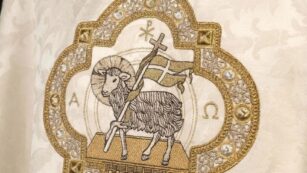
Rembrandt van Rijn, a master of the Dutch Golden Age, is renowned for his profound influence on the world of art. His work, characterized by vivid realism, expressive depth, and innovative use of light and shadow, continues to resonate in the contemporary art scene. This article delves into how Rembrandt’s unique style, particularly showcased in his masterpiece “The Return of the Prodigal Son,” influences today’s artists and art movements.
The Timeless Appeal of Rembrandt’s Technique
Rembrandt’s approach to art was revolutionary and remains influential today. His technique, known for its dynamic range of light and dark, brings a dramatic intensity to his subjects. Contemporary artists often draw inspiration from this aspect, incorporating it into various mediums, from traditional canvas paintings to digital art forms. The play of light and shadow in modern artworks often echoes Rembrandt’s skill in creating mood and depth, a testament to his enduring influence.
Emotional Depth and Humanism
“The Return of the Prodigal Son” is a prime example of Rembrandt’s ability to capture profound human emotions. The painting’s portrayal of forgiveness and redemption speaks to universal human experiences, themes contemporary artists continue exploring. Rembrandt’s focus on the human condition, with all its vulnerabilities and strengths, has encouraged modern artists to delve deeper into emotional narratives, using their art to express complex feelings and stories.
Influence on Portraiture and Self-Expression
Rembrandt was also a master of self-portraits, using them as a means of introspection and self-expression. This has inspired modern artists who explore self-identity and personal narratives.

The reflective nature of Rembrandt’s self-portraits has found resonance in contemporary art, where personal storytelling and exploration of identity are prevalent themes.
Contemporary Reproductions and Homages
The impact of Rembrandt’s work is also evident in the numerous reproductions and homages created by contemporary artists. A notable example is the hand-painted reproduction of The Return of the Prodigal Son. These reproductions are not mere copies but are often infused with the artist’s interpretation and style, bridging Rembrandt’s time and ours.
Rembrandt in Modern Art Education
Rembrandt’s work continues to be a cornerstone for teaching technique and artistic expression in art education. His approach to composition, light, and storytelling is studied and emulated by students worldwide, proving that his influence is not just in the creation of art but also in its education and appreciation.
The Reinterpretation of Classic Themes
Modern artists often reinterpret themes and scenes from Rembrandt’s works, placing them in contemporary contexts. This pays homage to Rembrandt and demonstrates the timeless nature of the themes he explored. The reinterpretation of classic themes from works like “The Return of the Prodigal Son” in a modern context shows the fluidity and continuity of artistic inspiration across ages.
Conclusion
The enduring impact of Rembrandt van Rijn on contemporary art cannot be overstated. His artistic vision, which transcended the boundaries of his time, continues to resonate in modern artistic practices and philosophies. His unique handling of light and shadow, deep understanding of human emotions, and groundbreaking techniques have become foundational elements in the education and development of contemporary artists.

Moreover, Rembrandt’s works, especially “The Return of the Prodigal Son,” are a perpetual source of inspiration. This painting, in particular, encapsulates a narrative depth and emotional resonance that speaks universally to human experiences of forgiveness, redemption, and familial bonds. These themes, so eloquently captured by Rembrandt, continue to find relevance and expression in modern art.
Contemporary artists emulate Rembrandt’s techniques and imbue his themes with new life and context, reflecting the current societal, cultural, and personal narratives. This reinterpretation demonstrates art’s fluid and evolving nature, where past and present dialogues create new meanings and perspectives.












